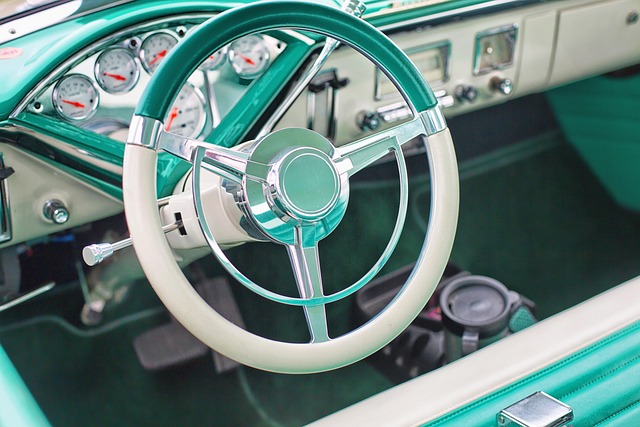Looking to register your car in California? This comprehensive guide walks you through every step, from understanding eligibility requirements to completing the application process. We cover essential documents needed, including a DMV vin verifier, and highlight the importance of verifying your vehicle’s VIN for legal ownership. By following these clear instructions, you’ll streamline the registration process, ensuring a smooth experience in California.
- Understand Eligibility Requirements for Car Registration in California
- Gather Necessary Documents for Your Vehicle
- Locate and Visit Your Local DMV Office or Website
- Complete Application Process: Vehicle Registration Form and Fee Payment
- Verify VIN and Ensure Legal Ownership Before Registration
Understand Eligibility Requirements for Car Registration in California

Before you begin the registration process, it’s crucial to understand the eligibility requirements set by the California Department of Motor Vehicles (DMV). To register your car in California, your vehicle must meet specific standards and have a valid, unexpired registration from another state or country. Additionally, the DMV requires a Vehicle Identification Number (VIN) verification to ensure the car’s authenticity and to combat theft. This process can be completed through a DMV vin verifier or, for added convenience, a mobile vin inspection service.
Ensure that your car is in good working condition and compliant with California’s safety and emissions standards. The VIN, a unique identifier for each vehicle, plays a vital role in the registration as it helps in tracking vehicle history and ownership. A mobile vin verifier or inspector can facilitate this step by providing on-site, efficient services, especially for those who prefer a more convenient and time-saving approach to registering their vehicles.
Gather Necessary Documents for Your Vehicle

Before registering your car in California, it’s crucial to gather all the essential documents related to your vehicle. This includes your Vehicle Identification Number (VIN), which acts as a unique fingerprint for your car and is verified by the DMV using reliable methods like a mobile VIN inspection or verifier. Additionally, you’ll need proof of ownership, typically through a title document, and valid identification such as a driver’s license. Other required documents may include registration cards from previous states, if applicable, and any records related to recent repairs or maintenance.
Ensure that all your paperwork is in order and up-to-date before proceeding with the registration process at the California DMV (Department of Motor Vehicles). Using a mobile VIN verification service can streamline this initial step by providing instant access to detailed vehicle history reports, making it easier for you to fulfill the necessary requirements accurately and efficiently.
Locate and Visit Your Local DMV Office or Website

Locate your local DMV office or visit their website to start the registration process. The California Department of Motor Vehicles (DMV) provides an efficient online system for many services, including vehicle registration. You can check their official site to find your closest DMV location, often with dedicated hours for different services. Many offices now offer mobile vin inspection and verification services, allowing you to get your car registered without leaving home.
Once there, or using the website, you’ll need to provide essential details such as your vehicle’s make, model, year, and its unique Vehicle Identification Number (VIN). A VIN verifier tool can help ensure the accuracy of these details, which are crucial for a seamless registration process. This initial step sets the foundation for a smooth experience as it allows DMV staff or online systems to cross-reference your car’s information accurately.
Complete Application Process: Vehicle Registration Form and Fee Payment

To complete the registration process in California, you’ll need to fill out a Vehicle Registration Form (also known as the Form DV304) and submit it along with the required fees. This form can be obtained from the California Department of Motor Vehicles (DMV) website or any DMV field office. Ensure all information is accurate and up-to-date, including your personal details and the vehicle’s identification number (VIN). The VIN is a critical piece of data that serves as a unique identifier for your car, and it can be easily verified using a dmv vin verifier to ensure its authenticity.
Once your form is ready, submit it along with the necessary fees. California offers various payment methods, including online, by check, or in person. After successful submission, you’ll receive your vehicle registration documents. Keep these records handy as they are essential for future interactions with the DMV, including renewals and mobile vin verification if needed.
Verify VIN and Ensure Legal Ownership Before Registration

Before diving into the registration process, it’s crucial to verify your vehicle’s VIN (Vehicle Identification Number) and confirm legal ownership. This step acts as a foundational check to ensure you’re legally entitled to register your car in California. Start by using a DMV-approved VIN verifier to cross-reference the number on your vehicle’s title, registration, and other official documents. An accurate match is essential, as it confirms not only the identity of your car but also its history, which can be crucial for future ownership and insurance purposes.
Consider utilizing a mobile VIN verifier for added convenience. These tools allow you to perform a quick, on-the-go inspection, making it easier to verify the vehicle’s details before proceeding with registration. This is particularly beneficial when dealing with out-of-state purchases or transferring titles, ensuring all legal requirements are met without delay.
Registering a car in California is a straightforward process, but understanding the eligibility requirements and gathering the necessary documents are crucial steps. By visiting your local DMV office or using their website, you can complete the application process efficiently. Remember to verify your Vehicle Identification Number (VIN) and confirm legal ownership before final registration. Using a reliable dmv vin verifier ensures accuracy and smoothens the overall procedure.
